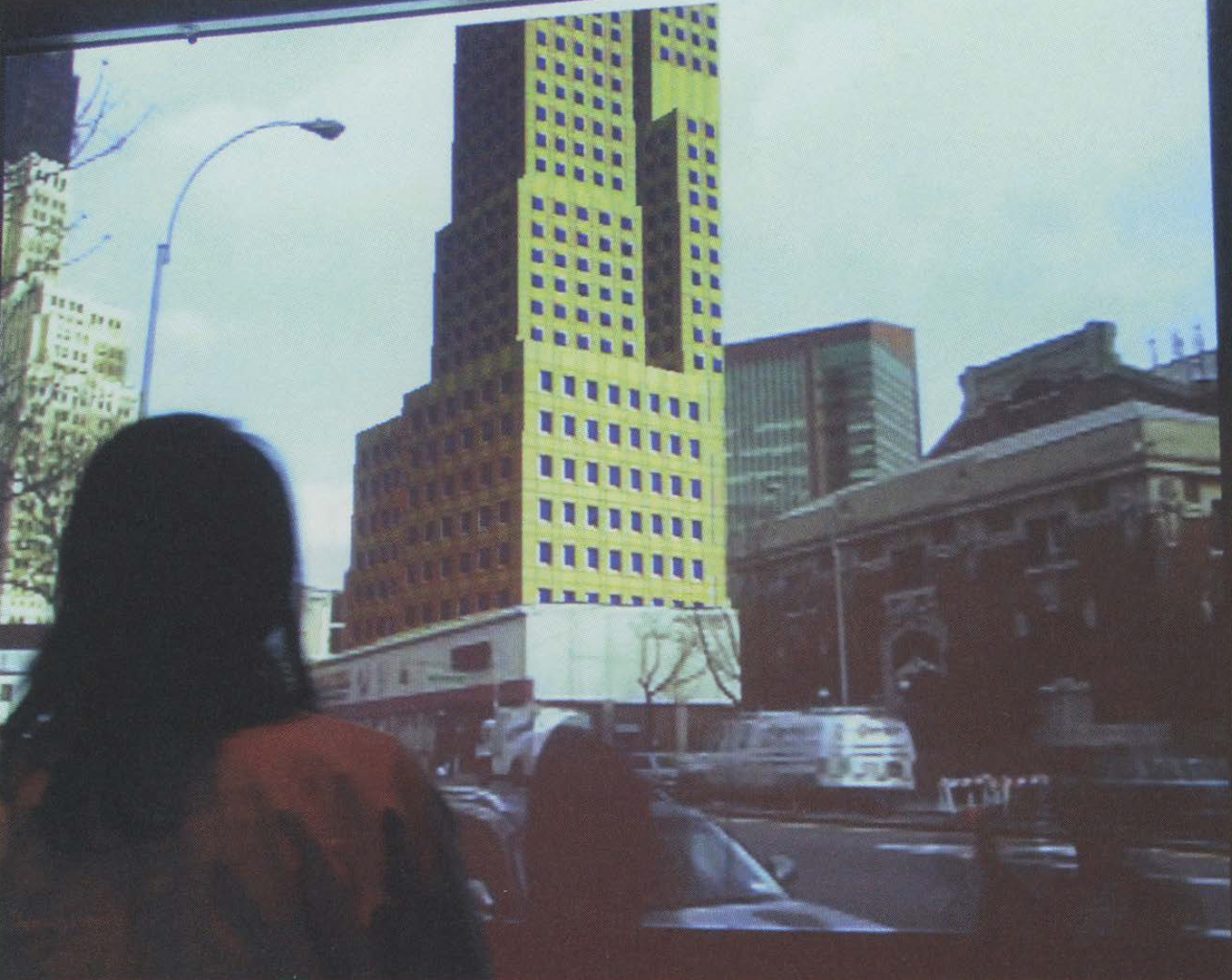Christian Croft, Ariel Efron, Ed Purver: Future Perfect
Artist(s):
Title:
- Future Perfect
Exhibition:
Creation Year:
- 2007
Category:
Artist Statement:
Future Perfect is an interactive audio/video installation that contemplates the proposed Atlantic Yards development in the Prospect Heights neighborhood of Brooklyn. If it is built, this astonishingly large-scale development will include 17 high-rise buildings and a sports arena, and it will be constructed in a neighborhood that consists primarily of low-rise, residential buildings and local businesses. The architectural shape of the neighborhood will be drastically altered. The Atlantic Yards development is currently a controversial issue in Brooklyn. Walking around the neighborhood, it is difficult to envision the enormity of the proposed architecture and to construct an informed opinion about the suitability of the proposal. The only images available of this suggested future are the architect’s renderings, which are necessarily drawn from a partisan perspective that presents the designs in a positive light. With a desire to fill this information gap, we created an installation that visualizes the developers’ plans from many angles, allowing people to interactively compare the proposed future with the present reality. Feeling the lack of community voices, we posted fliers all over the area surrounding the site, asking residents to phone in with personal opinions about the development, and about how they would ideally like to see their neighborhood developed. Recordings of the many calls that we received create the audio soundtrack to the piece. We also invited local schoolchildren (the people who will have to live with this architecture) to visually imagine how these streets would look if they had the power to shape this future. The installation is interactive in that both these “futures” are only revealed by someone’s physical presence. When viewers step into the installation, a video layer of an architectural future is interactively revealed in front of them and follows them as they move through the room. By exploring the width as well as the depth of the installation space, viewers can dynamically compare and contrast these different futures with the architecture of the present. In this way, the installation serves as a critical document of this moment in Brooklyn’s history.
Technical Information:
Future Perfect combines 3D modeling, motion tracking, live image processing, and internet telephony. Architectural models were constructed in the Maya 3D environment, built to scale,
and textured based on the architects’ plans, which are publicly available online. The video system consists of two tracks of synchronized video. The first track shows digital video taken from the neighborhood’s streets, and the second (which is hidden by default) presents the same footage with 3D models composited in the background of the first video’s scenes.
As viewers move in front of the video projection, a camera above tracks their positions along a horizontal axis parallel to the screen. Where viewers appear in the camera’s view, a
computer equipped with Max/MSP/Jitter software unmasks vertical slices of the second “future” video track above the first. These slices fade away when a viewer leaves that position.





